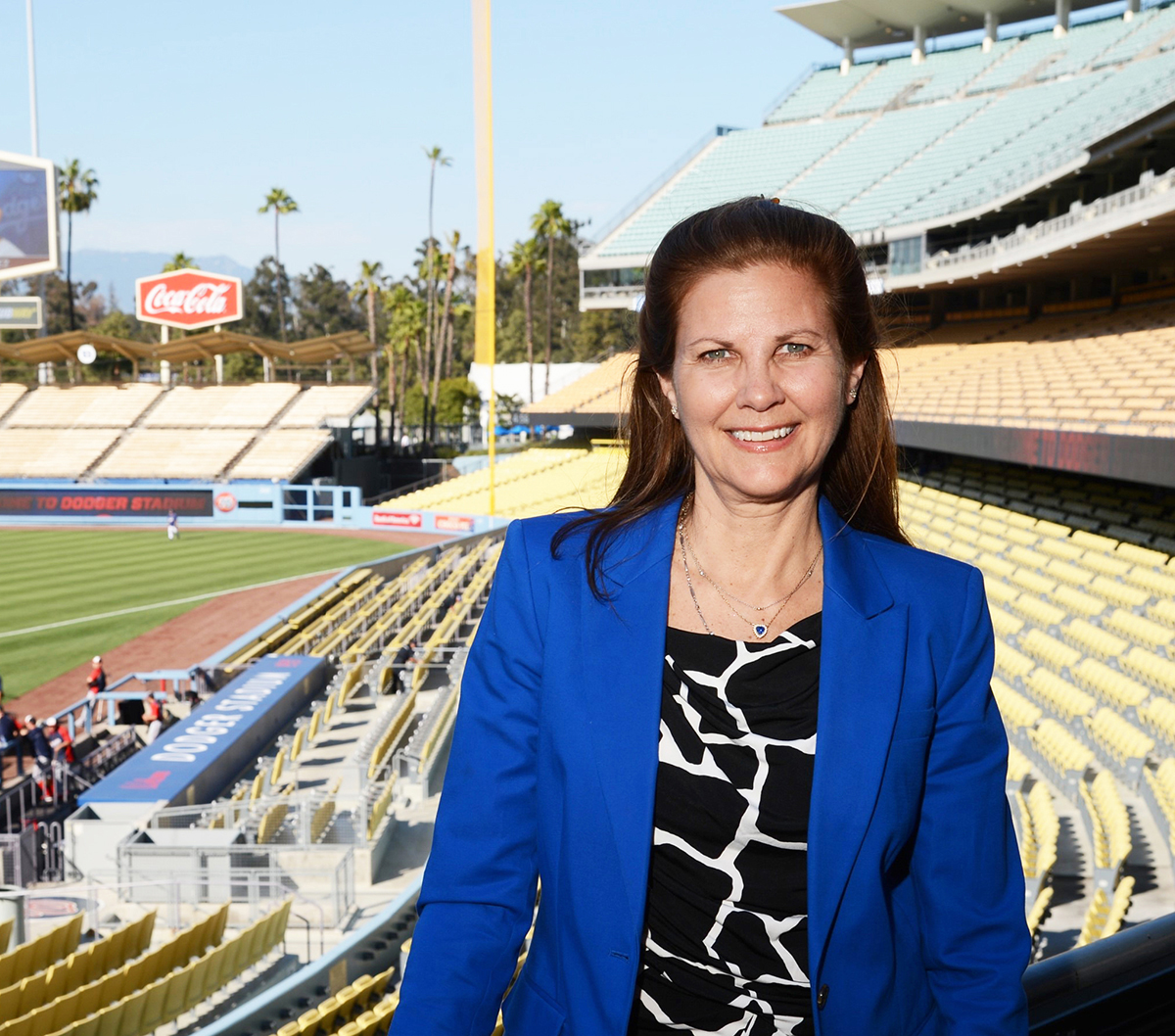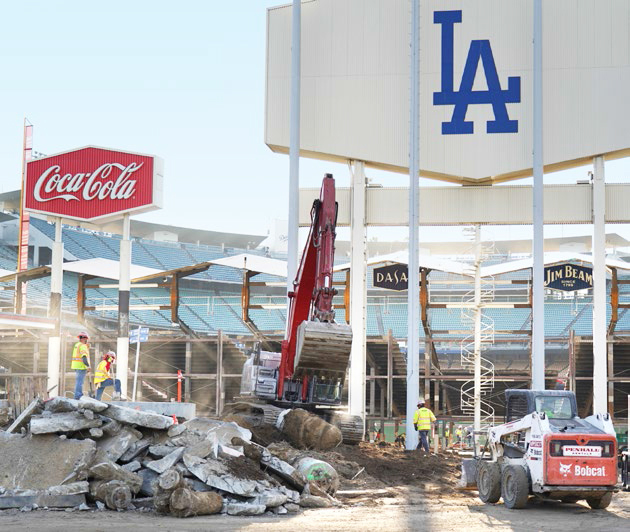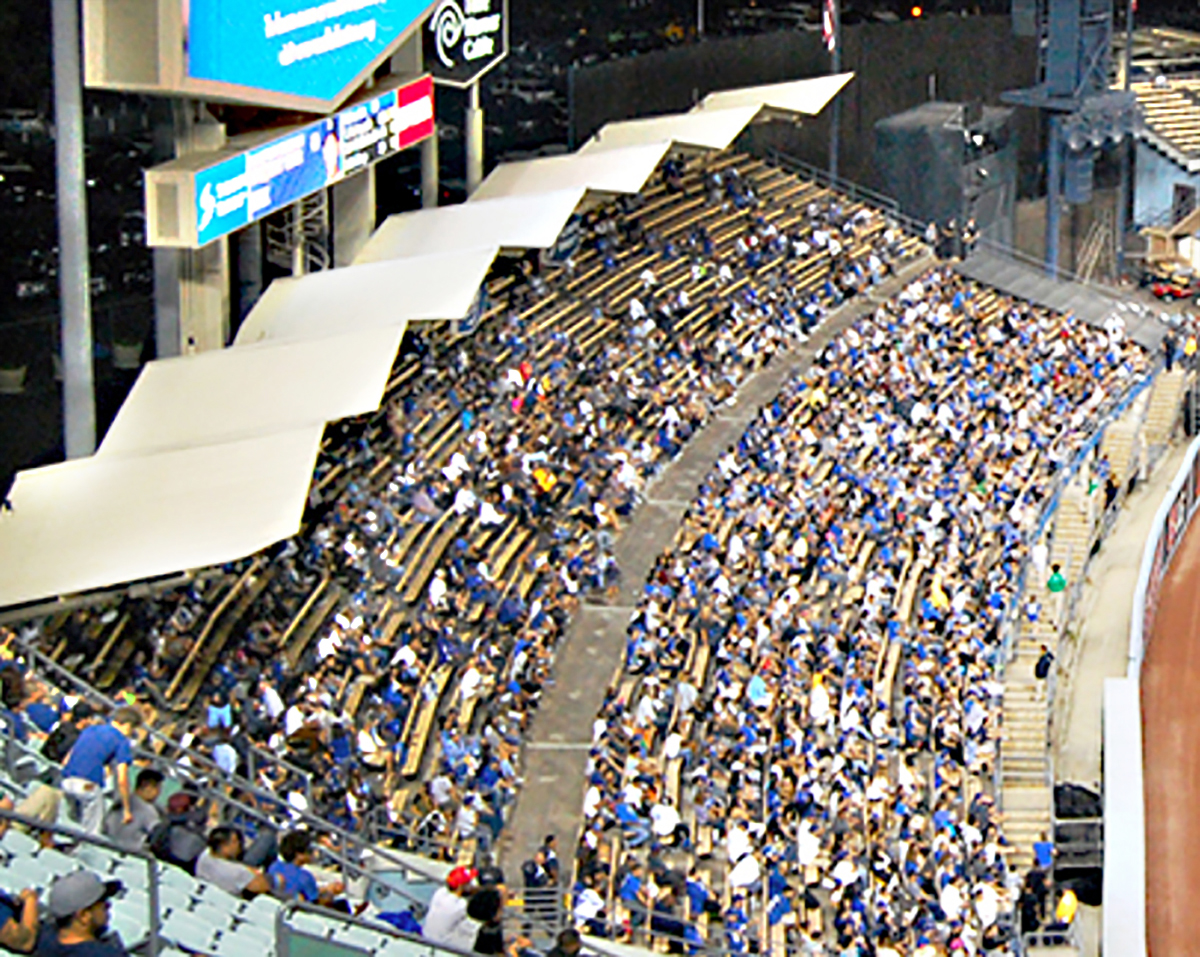Diamonds of the West - Page 2
 |
|
|
The architects interviewed here agree that all five parks displayed aspects of mid-century modern design in their original form, most using it in what Hess calls "its monumental sense." None were more stylish, though, than the folded bleacher roof, extended hexagonal scoreboard, and pastel-hued seats at Dodger Stadium.
It was built in a Santa Monica Mountains ravine unsuccessfully cleared of immigrant families for a proposed housing project designed by Richard Neutra. Like Candlestick, it soon played host to the Beatles in the nation's first-ever stadium concert tours.
Ultimately, siting made all the difference between the two ballparks. Bangham, who has done design and theme consultation on several California ballparks, said Dodger Stadium in 2019 is "still the best-sited ballpark in the country."
Smith names the aforementioned design features along with sightlines toward Elysian Park as "things we tried to preserve and celebrate" in restoring Dodger Stadium. There is no doubt that the park's viewshed looking north to the San Gabriel Mountains and south to downtown are also huge assets of the land deal struck with Los Angeles by Walter O'Malley.
Goldberger and Hess both note that land use decisions of the latter 20th century often reflected the advent of urban renewal programs or planned communities, and ballpark design could on occasion reflect either. California would not see another new major league park for the last third of the century, but all five '60s stadiums would be remodeled through the years. This usually occurred to accommodate gridirons along with diamonds, practically ruining them for baseball.
The Oakland Raiders and San Diego Chargers already played football on the respective baseball home fields of the A's and Padres for a couple of years each before MLB arrived in those towns in the late '60s. Baseball fans are generally seated further from the field in bowl-like multiuse stadiums, plus losing what experts cite as a critical asset: the viewshed to see through the stadium to the city outside, like all open floor plans.
 |
That was ultimately sacrificed when Candlestick and the Big A were enclosed by football grandstands in the 1970s, followed by Oakland Coliseum in the '90s.
Such a viewshed was never a part of the design of the Padres' first ballpark, although its faceted 'octorad' form was supposed to be an improved version of multiuse stadiums. Now called San Diego County Credit Union Stadium (SDCCU), for baseball, its architecture was still what Bangham terms "just a complete concrete mess."
Interestingly, Hess, Smith, and Bangham all have different takes on which '60s park in California was originally second best to Dodger Stadium, with Smith admiring the Coliseum as being "really elegant and beautiful" before renovations made it so "you just don't see its bones anymore."
Hess favors Candlestick largely for its landscaping and prominent entry tunnels, while conceding, "Certain ideas were not fully implemented in the design."
Bangham has worked quite a bit on modernizing the Big A in Anaheim and comments, "The original building was really wide open and celebrating of the California lifestyle."
Meanwhile, team owners and baseball fans were getting restless. The late-century trend toward renewal via construction of suburban multiuse stadiums was having unanticipated drawbacks for the game. Baltimore Orioles president Larry Lucchino received yet another doughnut-shaped design for the baseball team's new park in the late '80s and hired Smith out of desperation to help achieve a different vision.
Interviewed recently by phone, Smith was ever the gracious Mississippi-born lady in praising Goldberger's book while adding personal notes to the historic convergence between Lucchino and herself.
 |
"Like most baseball fans, I try to go to different ballparks when I travel," she said about sitting in Baltimore's Memorial Stadium feeling remiss upon overhearing Orioles fans talk of replacing a field that she thought had a nice "old shoe sort of feeling."
With an impressive resumé but never having done a sports building, she applied for the job, soon heard from Lucchino, and the result in 1992 was Oriole Park at Camden Yards. That new park changed the design—not to mention the ticket-buying experience—of America's oldest spectator sport.
"She's the one who invented the modern downtown ballpark in Camden Yard," said Bangham, calling Smith "my hero." Similarly lionized by Goldberger, Smith admits to being embarrassed and said Ballpark was "a little hard to read" because of that lofty portrayal.
"I just had this epiphany," she related of how it happened, reflecting on Mayor William Schaefer's plans for downtown Baltimore and thinking, "Maybe this has a chance to invigorate all this." The rest is history.
The stadium in Baltimore, writes Goldberger, "redefined what [a] baseball park would be and how people would experience it." Bangham puts it another way: "That caused everybody to say, 'Hey, we want one like Camden Yards.'"
Architects with Kansas City-based HOK Sport were the official designers of Camden Yards, with considerable input from Smith. Bangham agreed with Goldberger in commenting, "HOK hated her for it, and then they went and stamped out [parks like Camden] in a few other places."
Asked the most critical elements of ballpark design, Smith replied, "I always think about the context, not just the physical, but the cultural…It is different from city to city."
"I think that's why baseball has such a broad appeal," said the architect, "the ability to reflect a [city's] culture in a more vivid way than other sports."
 |




